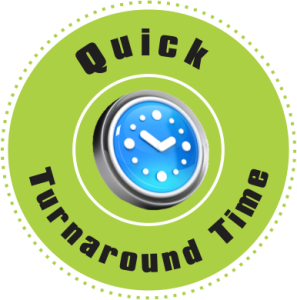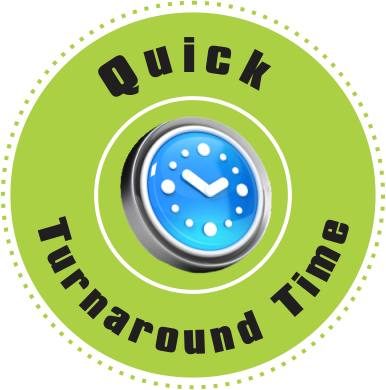How quickly your transcriber can transcribe your audio recording determines how soon they can get the transcript to you and ultimately the cost of the transcription. If takes longer to transcribe your interviews, webinars, podcast et al, your transcriber will bill you more. While not all transcriber are the same, some transcribe faster than others, (and all things being equal) there are 3 factors that affect audio/video transcription turnaround.

Let me briefly discuss each one of these factors and what you can do to assist your transcriber get your transcripts to
you faster while at the same time save you money. Before I do that, what is turnaround? Turnaround is “…the time needed to complete a task, especially one involving receiving something, processing it, and sending it out again.”
In the transcription industry, turnaround is the measured as the time difference between when you avail the audio or video file(s) and when you get the transcript (s). A quick turnaround means that when you place your transcription order you get the transcript(s) emailed to you very quickly. With overnight turnaround this is usually within 12 hours!!!
What can you do to reduce the turnaround of your audio transcription order?
1) Quality of Audio.
This is the most important factor. There is a close correlation between the amount of time it takes to transcribe an hour of audio and the quality of the audio. Clear, studio quality audio are easier to transcribe and thus take less time to transcribe.
For a professional transcriber, the ratio between amount of time take to transcribe the audio and duration of the audio is 4:1 for very good audio. However this ratio increases to 6:1 (and sometimes to 8:1) with noisy audio with background noise. As you can imagine, this is going to have a direct bearing on how fast you can get the transcript and the cost of transcription.
Here are 3 things that you can do to record the best audio possible. 1) Try and eliminate background noise. If you are recording an interview near a fan or the AC, switch it off. Avoid conducting interviews in cafes and restaurants. Libraries, offices, kitchens, and boardrooms are great places to conduct interviews or group discussions. 2) Keep the speakers close to the microphone. It’s always better to place the mic closer to the interviewee than the interviewer. If you are conducting a group interview or a focus group ask everyone to speak clearly, loudly and one at a time. 3) Use a digital recorder. Digital recorder offer great quality recording than mini tape recorders, smartphones (iPhone et al), and hand held devices. And use an external microphone whenever possible. When you are recording always have a backup recorder, nothing is foolproof!
2) Elements of Transcription.
a) Mode of transcription
Generally there are two modes of transcription that work for most use cases. Strict verbatim transcription aims to capture all utterances (including ums, ahs, and repetitions) and also environmental sounds (phone ringing, dog barking, knock on the door et al) and nonverbal cues (laughter, crying, sniffing…).
Academic researchers tend to want their data transcribed verbatim. Whereas intelligent verbatim transcription attempts to be faithful to the participants “voice” while providing a more readable transcript. Thus repetitions, environmental sounds, and nonverbal cues are not transcribed. Many journalist, bloggers, and product makers prefer intelligent transcripts. Strict verbatim transcription tends to take (~10%) longer than intelligent verbatim transcription.
Intelligent verbatim transcription is suitable for most of your needs, unless you are researcher in the field of discourse analysis or linguistics. Make sure you let your transcriber know the type of transcript suits your specific needs.
b) Timestamps/timecodes
Whether or not you require timestamps affects transcription turnaround time. Timestamps/timecodes can be added either at a fixed interval, say every 2 minutes, or whenever there is a change of speaker, or at the beginning of every paragraph or page. The time it takes to add timestamps at longer than 2 minute intervals is negligible. And most transcription companies will not bill you extra. However, if you require timestamps inserted for shorter interviews, that can increase the transcription turnaround by about 20%.
Unless you are a documentary film maker, there is no need to have a transcript that has timestamps at shorter than 2 minute intervals.
3) Accents
Most transcribers are fairly comfortable transcribing speaker with a New York accent. Scottish or West African accents can be more challenging. Keep in mind that that your transcriber has certain preferences when it come to accents. It’s always nice to ask beforehand if they are comfortable transcribing a more exotic accent.
To aid in getting a definite turnaround deadline, it’s useful to share a sample of the recording with your transcriber. In next week’s post I will share with you 3 easy ways to share your audio or video file with your transcriber.
Hopefully this short post has been informative and if you are looking for a quick transcription service please get in touch.

Leave a Reply